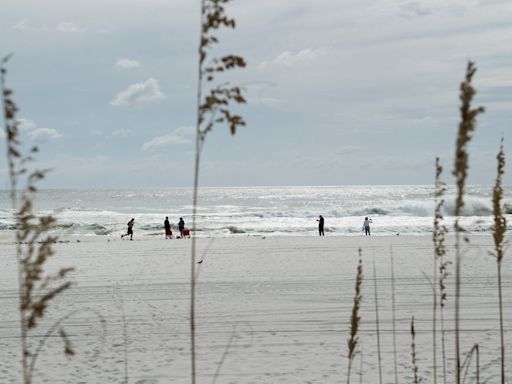Search results
A rip tide, or riptide, is a strong offshore current that is caused by the tide pulling water through an inlet along a barrier beach, at a lagoon or inland marina where tide water flows steadily out to sea during ebb tide.
Nov 9, 2019 · 1.7M. 179M views 4 years ago #VanceJoy #Riptide #Lyrics. 🎵 Follow our Spotify playlists: http://bit.ly/7cloudsSpotify 🎧 Vance Joy - Riptide (Lyrics) ⏬ Download / Stream: http://bit.ly/1uKMhe4...
- 4 min
- 181.3M
- 7clouds
Jun 16, 2024 · Rip currents are powerful, channeled currents that can move faster than an Olympic swimmer. Rip tides are specific types of currents associated with tidal movement through inlets and estuaries. Learn how to stay safe from rip currents and rip tides at the beach.
5 days ago · The term “rip tide” is usually used to describe rip currents, which are long, narrow bands of water that can pull swimmers away from the shore. While some researchers recommend floating to the end of the current, organizations such as the National Atmospheric and Oceanic Administration (NOAA) advise swimming parallel to the shore ...
- 1.1M
- No, rip currents don’t pull you under the water, but they will carry you away from shore. Trying to fight against them can lead to exhaustion, putt...
- People can drown in rip currents when they panic and lose control in the water, or when they try to swim against the current and exhaust themselves...
- Undertow is a type of current that occurs when large waves are breaking at the beach. After a wave breaks, the water can rush back, causing you to...
A rip current (also rip) is a specific type of water current that can occur near beaches where waves break. A rip is a strong, localized, and narrow current of water that moves directly away from the shore by cutting through the lines of breaking waves, like a river flowing out to sea.
Learn what rip currents are, how they form, and how to escape them. Rip currents are localized currents that flow away from the shoreline toward the ocean, perpendicular or at an acute angle to the shoreline.
Sep 22, 2023 · Rip currents are narrow, powerful currents of water that run from the beach out into the ocean. Learn how rip currents form and how to escape rip currents.





